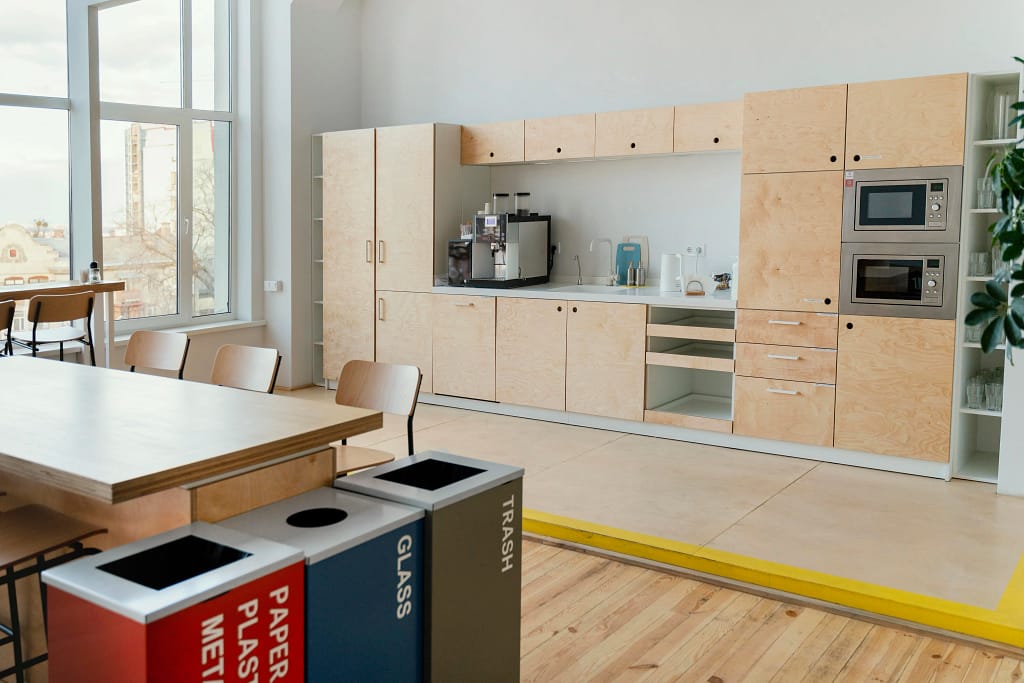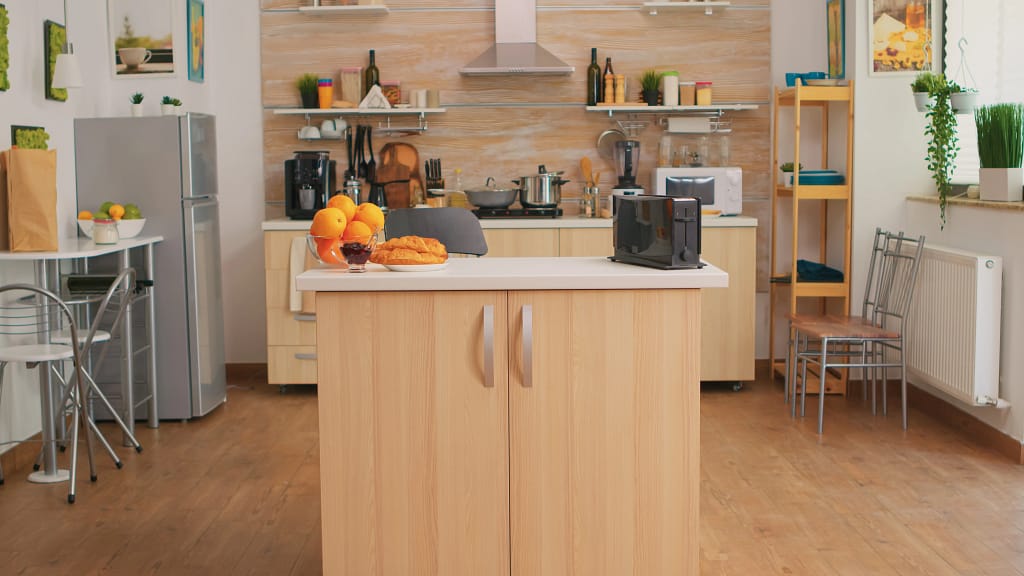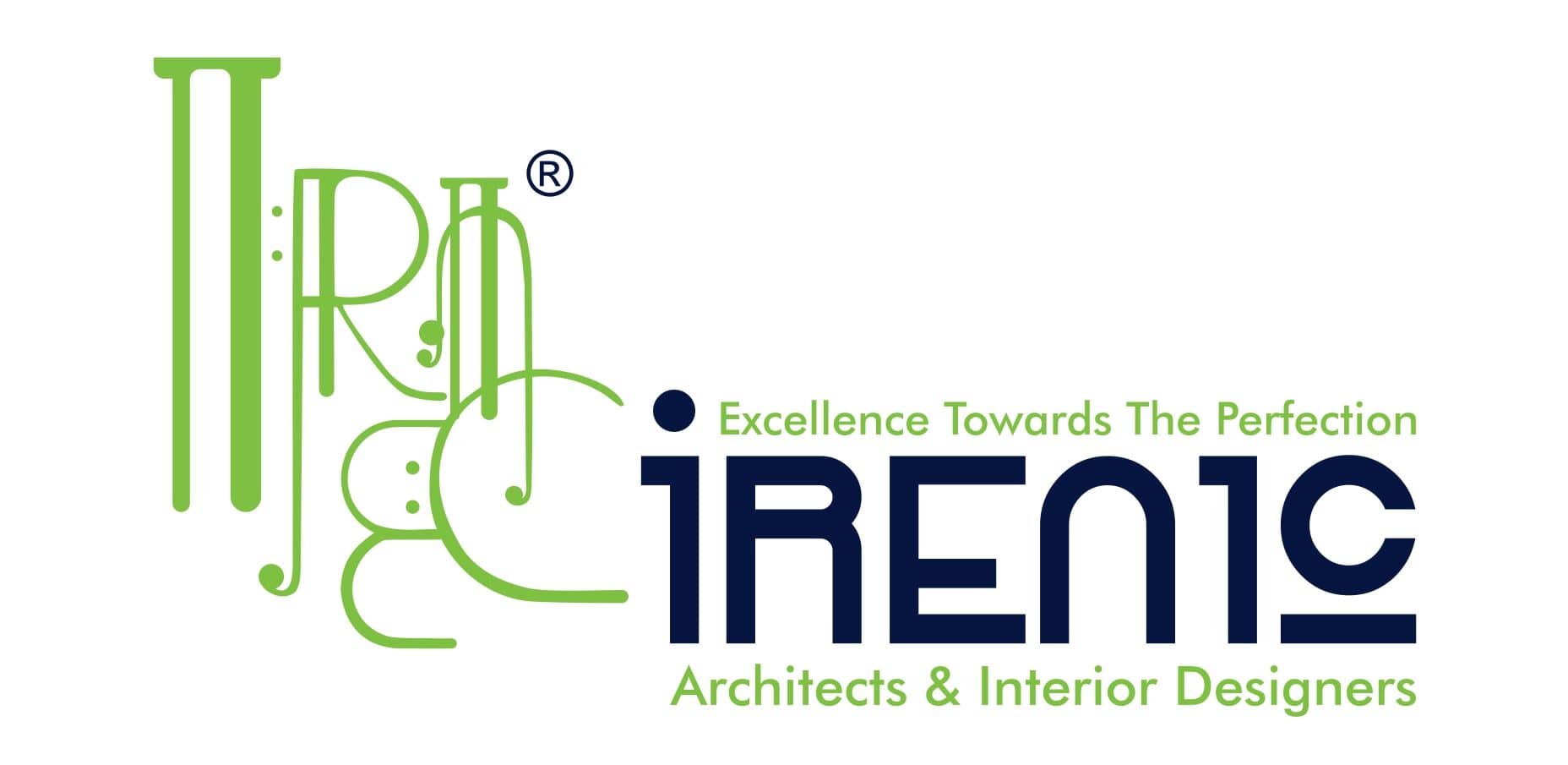The Heartbeat of Your Kitchen
Stepping into the heart of your home, the kitchen, you’re met with a symphony of design and functionality. It’s where memories are cooked, stories are shared, and life’s flavors come alive. But what truly sets the stage for this culinary theater? It’s the modular kitchen cabinet materials. These aren’t just wooden or metallic structures holding your utensils; they’re the backbone of your kitchen’s aesthetics and utility. Choosing the best modular kitchen cabinet materials isn’t a mere decision; it’s an investment in durability, style, and convenience. As we delve deeper, let’s uncover the essence of these materials and their transformative power in shaping your kitchen’s soul.
Understanding Modular Kitchens
In the ever-evolving world of interior design, the concept of a modular kitchen has emerged as a game-changer. But what exactly is a modular kitchen, and why is it such a buzzword among homeowners and interior enthusiasts? Let’s explore the concept and significance of modular kitchens, and how the choice of modular kitchen cabinet materials plays a pivotal role.
Modular Kitchens: Beyond the Ordinary
A modular kitchen isn’t just a space for cooking; it’s a canvas where functionality and aesthetics dance in harmony. Unlike traditional kitchens, which can often feel cluttered and lack organization, modular kitchens are characterized by a systematic arrangement of cabinets, shelves, and appliances, all designed to maximize space utilization while adding an elegant touch to your home with the right choice of modular kitchen cabinet materials.
The Role of Cabinets in Modular Kitchens
Now, let’s zoom in on the stars of our kitchen theater: the cabinets made from the finest modular kitchen cabinet materials. These storage wonders are more than just boxes; they are the unsung heroes of your culinary journey. From storing your pots and pans to neatly tucking away your spices, they keep your kitchen organized and efficient.
Cabinets in a modular kitchen, crafted from a range of premium modular kitchen cabinet materials, come in a variety of sizes and styles, allowing you to customize them according to your needs and preferences. Whether you’re an aspiring chef or someone who enjoys a quick microwave dinner, these cabinets cater to every lifestyle.
Why Material Matters in Modular Kitchens
So, where do modular kitchen cabinet materials come into the picture? Well, these materials aren’t merely a choice; they’re a statement. Your choice of cabinet material sets the tone for the entire kitchen’s aesthetics and functionality. It’s a decision that affects your daily cooking experience, the longevity of your kitchen, and the overall vibe of your home.
Now that we’ve scratched the surface, it’s time to dive deeper into the heart of the matter. We’ll explore why the selection of best modular kitchen cabinet materials is a decision that deserves careful consideration. Let’s venture into the world of plywood, MDF, wood, stainless steel, PVC, laminate, and acrylic, and discover the unique characteristics that make each one a contender in the modular kitchen arena.
Durability: The Backbone of Reliability
Durability is the silent strength that your modular kitchen cabinet materials should exude. Think about it: your kitchen is a bustling hub, facing daily wear and tear. From hot pans to spilled sauces, it endures a lot. That’s where the choice of cabinet material becomes crucial.
Plywood: Known for its strength and resistance to moisture, plywood, as one of the top modular kitchen cabinet materials, stands the test of time.
Stainless Steel: Resilient to rust and stains, stainless steel cabinets made from durable modular kitchen cabinet materials are built to last.
Wood: Classic and timeless, wooden cabinets crafted from high-quality modular kitchen cabinet materials are not only durable but also age gracefully.
Aesthetics: Elevating Your Kitchen’s Beauty
A beautiful kitchen isn’t just about its visual appeal; it’s about creating a space that inspires you. The best modular kitchen cabinet materials can be your design muse.
- Acrylic: Sleek and glossy, acrylic cabinets add a modern touch to your kitchen.
- Laminate: With a wide range of colors and textures, laminate cabinets offer endless design possibilities.
- MDF: Easily customizable, MDF cabinets can be painted to match your desired aesthetic.
Functionality: Where Form Meets Function
While aesthetics matter, functionality is the heart and soul of a kitchen. You need cabinets crafted from the right modular kitchen cabinet materials that not only look good but also make your life easier.
- PVC: Low-maintenance and easy to clean, PVC cabinets are a practical choice.
- Stainless Steel: Hygienic and resistant to heat, stainless steel is perfect for the serious home chef.
- Wood: Time-tested, wooden cabinets provide a warm and inviting atmosphere.
Exploring the 7 Top Modular Kitchen Cabinet Materials
In our quest for the ideal kitchen cabinets, it’s essential to acquaint ourselves with the diverse array of modular kitchen cabinet materials available. Each material possesses unique characteristics that can greatly influence your kitchen’s aesthetics and functionality. Let’s embark on this enlightening journey through the top seven contenders:
1. Plywood: The All-Rounder Material

Strength and Versatility
Plywood has long been hailed as a champion among modular kitchen cabinet materials. Its layers of wood veneer, glued and pressed together, create a sturdy structure that resists warping and moisture damage. This makes plywood cabinets highly durable, able to withstand the rigors of daily kitchen activities with grace.
An Elegant Canvas
Plywood’s smooth surface, a distinctive feature of this exceptional modular kitchen cabinet material, is ideal for various finishes and paints, allowing you to customize your kitchen’s look effortlessly. Whether you prefer a classic wooden grain or a sleek, contemporary appearance, plywood, as one of the top modular kitchen cabinet materials, can adapt to your design vision.
2. MDF (Medium-Density Fiberboard): The Budget-Friendly Choice

Affordable and Adaptable
MDF, or Medium-Density Fiberboard, is an economical choice for those seeking quality without breaking the bank. It is created by compressing wood fibers with adhesive, resulting in a dense, smooth material that’s easy to work with. MDF cabinets, made from cost-effective modular kitchen cabinet materials, offer a cost-effective solution for achieving a polished look.
Design Freedom
One of MDF’s standout qualities is its adaptability to various finishes, including paints and laminates. This means you can unleash your creativity when it comes to colors and styles, making it a favored option for those looking to personalize their kitchen on a budget.
3. Wood: The Timeless Classic

Elegance and Charm
Wood, with its timeless appeal, never goes out of style. Its natural beauty and warmth have a way of transforming a kitchen into a cozy, inviting space. Wood cabinets add character and a touch of luxury to any culinary haven.
Variety of Species
From oak to cherry, each wood species has its unique grain pattern and color. This diversity allows you to choose the type of wood that best matches your desired aesthetics, whether it’s the rustic charm of knotty pine or the refined elegance of walnut.
4. Stainless Steel: The Modern Maverick

Sleek and Hygienic
Stainless steel is the material of choice for those who appreciate a modern, minimalist look. It’s not just about aesthetics, though; stainless steel is also incredibly hygienic and resistant to both heat and stains. This makes it a top pick for serious home chefs.
Industrial Elegance
The industrial charm of stainless steel cabinets can’t be denied. They exude a professional vibe, and their reflective surfaces can make your kitchen feel more spacious. For those who value cleanliness and a contemporary look, stainless steel is the answer.
5. PVC: The Low Maintenance Material

Easy-Care Surfaces
PVC (Polyvinyl Chloride) cabinets are all about convenience. They feature a PVC coating that’s not only visually appealing but also exceptionally easy to clean. Spills and splatters? Just wipe them away without worry.
Endless Possibilities
PVC cabinets come in an array of colors and textures, allowing you to customize your kitchen’s appearance. Whether you prefer a high-gloss finish or a subtle matte texture, PVC can cater to your design preferences effortlessly.
6. Laminate: The Versatile Option

Design Flexibility
Laminate cabinets offer a world of design possibilities. They are made by fusing layers of paper together under high pressure and heat, topped with a protective layer. This results in cabinets that are resistant to stains, scratches, and heat, making them durable and easy to maintain.
Style on a Budget
Laminate cabinets can mimic the look of natural materials like wood or stone, offering a budget-friendly way to achieve a high-end appearance. Whether you desire the look of oak, granite, or marble, laminate cabinets can fulfill your vision.
7. Acrylic: The High-Gloss, Premium Choice

Glossy Elegance
If you seek a kitchen that exudes sophistication and luxury, acrylic cabinets should be on your radar. These cabinets feature a high-gloss acrylic layer that gives them a sleek, reflective finish reminiscent of glass.
Durability Meets Beauty
Despite their elegant appearance, acrylic cabinets are also known for their durability. They are resistant to moisture, fading, and scratches, making them a lasting investment in your kitchen’s aesthetic appeal.
Each of these modular kitchen cabinet materials brings its own unique set of advantages and characteristics to the table. As we delve deeper into the specifics of each material, you’ll gain a better understanding of which one aligns best with your culinary aspirations and kitchen design dreams.
Material Deep Dive
Now that we’ve introduced you to the elite squad of modular kitchen cabinet materials, let’s take a closer look at each material’s distinct attributes. This deep dive will equip you with the knowledge needed to make an informed decision for your kitchen.
Pros and Cons: Weighing the Options
Plywood:
Plywood stands as a robust contender in the world of modular kitchen cabinet materials. Its pros include exceptional durability, resistance to moisture, and a versatile canvas for finishes. Plywood cabinets can endure the test of time, even in humid kitchen environments. Moreover, they provide the flexibility to embrace your preferred color schemes and design themes. On the flip side, plywood tends to be costlier than some alternatives, which might make budget-conscious homeowners pause.
MDF (Medium-Density Fiberboard):
MDF, on the other hand, shines as a budget-friendly choice among modular kitchen cabinet materials. It offers a smooth surface that readily accepts finishes, making it easy to achieve the polished look you desire. The adaptability of MDF, as a cost-effective modular kitchen cabinet material, is another plus, making it suitable for a wide range of design styles. However, it’s essential to be cautious about moisture exposure, as MDF is prone to damage when it comes into contact with water.
Wood:
For those who seek timeless beauty and warm aesthetics, wood cabinets are a top choice. With a variety of wood species to choose from, you can curate a kitchen that exudes character and elegance. However, wood does come with a vulnerability to moisture, requiring periodic maintenance to preserve its natural allure.
Stainless Steel:
Stainless steel cabinets usher in modern aesthetics to your kitchen. They are not only sleek but also highly functional, being resistant to both heat and stains. The easy maintenance aspect of stainless steel is a significant pro, perfect for those who value cleanliness and a contemporary look. On the downside, fingerprints can be more visible on stainless steel, and some may find the material cold to the touch.
PVC:
PVC cabinets, crafted from low-maintenance modular kitchen cabinet materials, are synonymous with easy upkeep. Their surfaces are a breeze to clean, and they boast resistance to various forms of damage, making them a practical choice. Moreover, PVC offers a diverse range of textures and colors, allowing you to personalize your kitchen’s appearance to your heart’s content. However, it’s essential to remember that PVC, while a versatile modular kitchen cabinet material, can be vulnerable to heat damage, so caution is advised.
Suitability: Matching Material to Needs
Plywood:
Plywood cabinets are ideal for those who prioritize durability and are willing to invest a bit more. They are well-suited for busy kitchens where longevity and reliability are paramount.
MDF (Medium-Density Fiberboard):
MDF serves as a budget-friendly choice, making it suitable for those looking for an affordable yet polished appearance. Its adaptability in design allows you to create a personalized kitchen.
Wood:
Wood cabinets are perfect for those who appreciate the timeless charm of wood and are willing to put in some maintenance effort to preserve their natural beauty.
Stainless Steel:
Stainless steel is a modern choice, making it suitable for contemporary kitchens and serious cooks who value cleanliness and durability.
PVC:
PVC cabinets are a low-maintenance option for those who want easy-care cabinets with various design possibilities, but it’s crucial to protect them from excessive heat.
Laminate:
Laminate cabinets are versatile and durable, making them suitable for those with design preferences ranging from wood to stone, but they require gentle handling to prevent chipping.
Acrylic:
Acrylic cabinets are for those seeking a luxurious, high-gloss finish and are willing to invest in their kitchen’s elegance. They are highly durable and moisture-resistant.
Cost: Budget Considerations
When it comes to cost, the modular kitchen cabinet materials range from budget-friendly to premium. Plywood and MDF are mid-range options, offering a balance between quality and cost. Wood and stainless steel tend to be on the higher end, while PVC, laminate, and acrylic cater to those seeking affordability without compromising style.
Maintenance: Ease of Care
Maintenance plays a crucial role in your material selection. If you prefer low maintenance, options like stainless steel, PVC, and laminate are easy to clean and care for. On the other hand, wood requires periodic maintenance to preserve its beauty, while acrylic is known for its durability and resistance to moisture and scratches.
Expert Tips on Choosing the Right Material
Now that we’ve delved into the diverse world of modular kitchen cabinet materials, it’s time to navigate the critical decision-making process. Selecting the ideal material is not just about aesthetics; it’s about crafting a kitchen that seamlessly blends with your lifestyle, budget, and design vision. Here are some expert tips to help you make the right choice:
Considering Lifestyle and Usage: Tailoring to Your Needs
Your Kitchen’s Daily Routine
Start by evaluating how your kitchen operates on a day-to-day basis. Are you an avid cook who frequently uses the stove, experimenting with culinary delights? If so, durability and heat resistance, such as that offered by stainless steel or wood, should be high on your priority list.
Family Dynamics
Consider the needs of your household. Do you have children who may be prone to spills and splatters? In such cases, easy-to-clean options like PVC or laminate can save you from endless cleanup sessions.
Frequency of Renovation
Think about how often you plan to renovate your kitchen. If you’re one to embrace change frequently, materials like MDF or laminate offer flexibility, allowing you to switch up your kitchen’s appearance without breaking the bank.
Balancing Budget and Quality: Value for Money
Determine Your Budget
Set a clear budget for your kitchen renovation project. Keep in mind that while some materials may be initially costlier, they can save you money in the long run due to their durability and low maintenance.
Longevity vs. Investment
Consider your kitchen cabinets as an investment. While wood and stainless steel may be on the higher end of the price spectrum, their durability and timeless appeal can justify the expense over time.
Affordable Alternatives
For those working within a tighter budget, materials like MDF and PVC offer affordability without compromising style. It’s all about finding the right balance between your budget constraints and your desire for quality.
Aligning with Design Aesthetics: Creating Your Dream Kitchen
Harmonize with Your Home
Your kitchen, equipped with the right choice of modular kitchen cabinet materials, should seamlessly blend with the overall design of your home. If your residence boasts a modern, minimalist look, stainless steel or acrylic cabinets, among the top modular kitchen cabinet materials, can complement the aesthetic. For more traditional homes, wood cabinets crafted from premium modular kitchen cabinet materials add warmth and character.
Color Palette and Texture
Consider your preferred color palette and texture. If you have a specific vision for your kitchen’s appearance, materials like laminate and acrylic offer an array of options to match your desired style.
Consult with Residential Interior Designers
Don’t hesitate to seek advice from residential interior designers. Their expertise can be invaluable in helping you choose the right material that aligns with your design aspirations and lifestyle.
How to Maintain and Care for Your Cabinets
Caring for your chosen modular kitchen cabinet materials is paramount to ensuring they maintain their pristine appearance and functionality over time. Here are some essential maintenance tips to keep your cabinets looking as good as new:
Regular Cleaning Routine
Establish a regular cleaning routine to prevent the accumulation of dirt and grime. Use a soft, damp cloth or sponge to wipe down your cabinets. Avoid abrasive cleaners or harsh chemicals that can damage the finish.
Address Spills Promptly
Spills are inevitable in a kitchen, but swift action can prevent stains and damage. Clean up spills as soon as they occur to avoid any lasting marks or warping of the material.
Handle with Care
Treat your cabinets gently. Avoid slamming doors or drawers, as this can lead to premature wear and tear. Use door handles or knobs to open and close cabinets rather than pulling on the edges.
Regular Inspection
Periodically inspect your cabinets for any signs of damage or wear, such as loose hinges or chipped surfaces. Address these issues promptly to prevent further deterioration.
Avoid Excessive Heat and Moisture
While many modular kitchen cabinet materials are resistant to heat and moisture, it’s best to avoid subjecting them to extreme conditions. Use trivets or hot pads under hot pots and pans, and ensure proper ventilation to minimize moisture buildup.
By following these simple maintenance practices, you can prolong the life and beauty of your cabinets, ensuring that they continue to enhance your banglow interior and serve as the reliable backbone of your kitchen for years to come.

